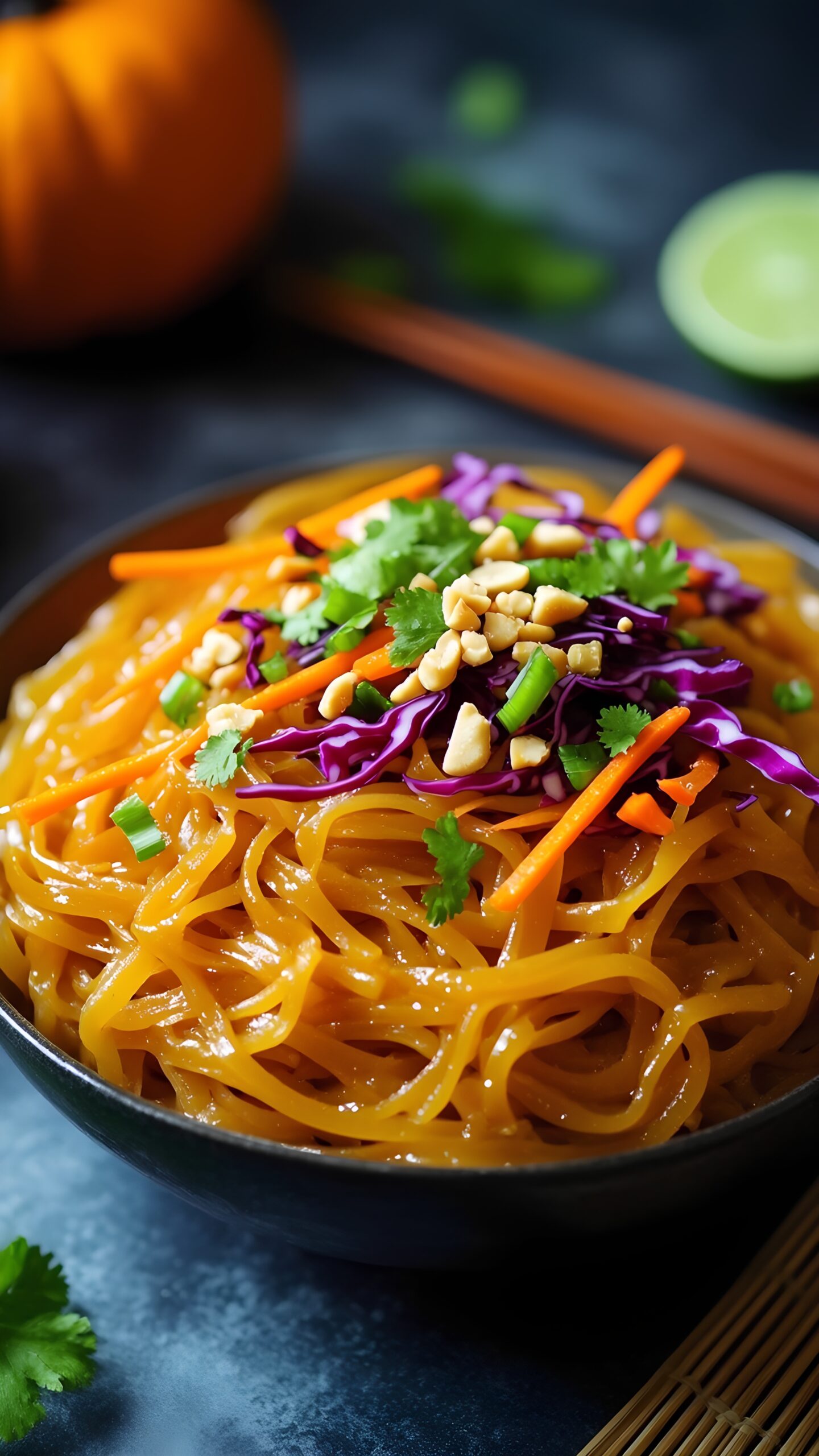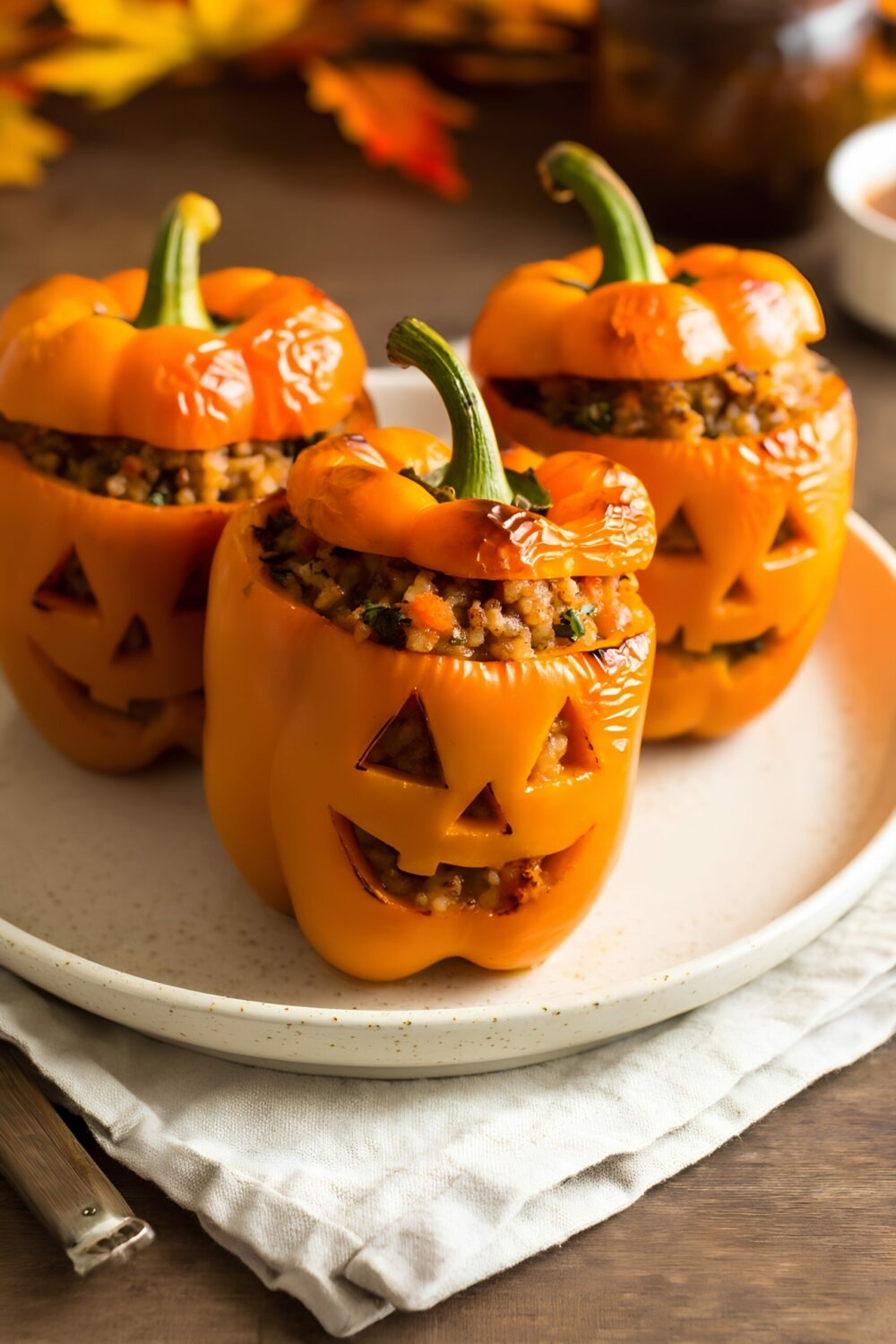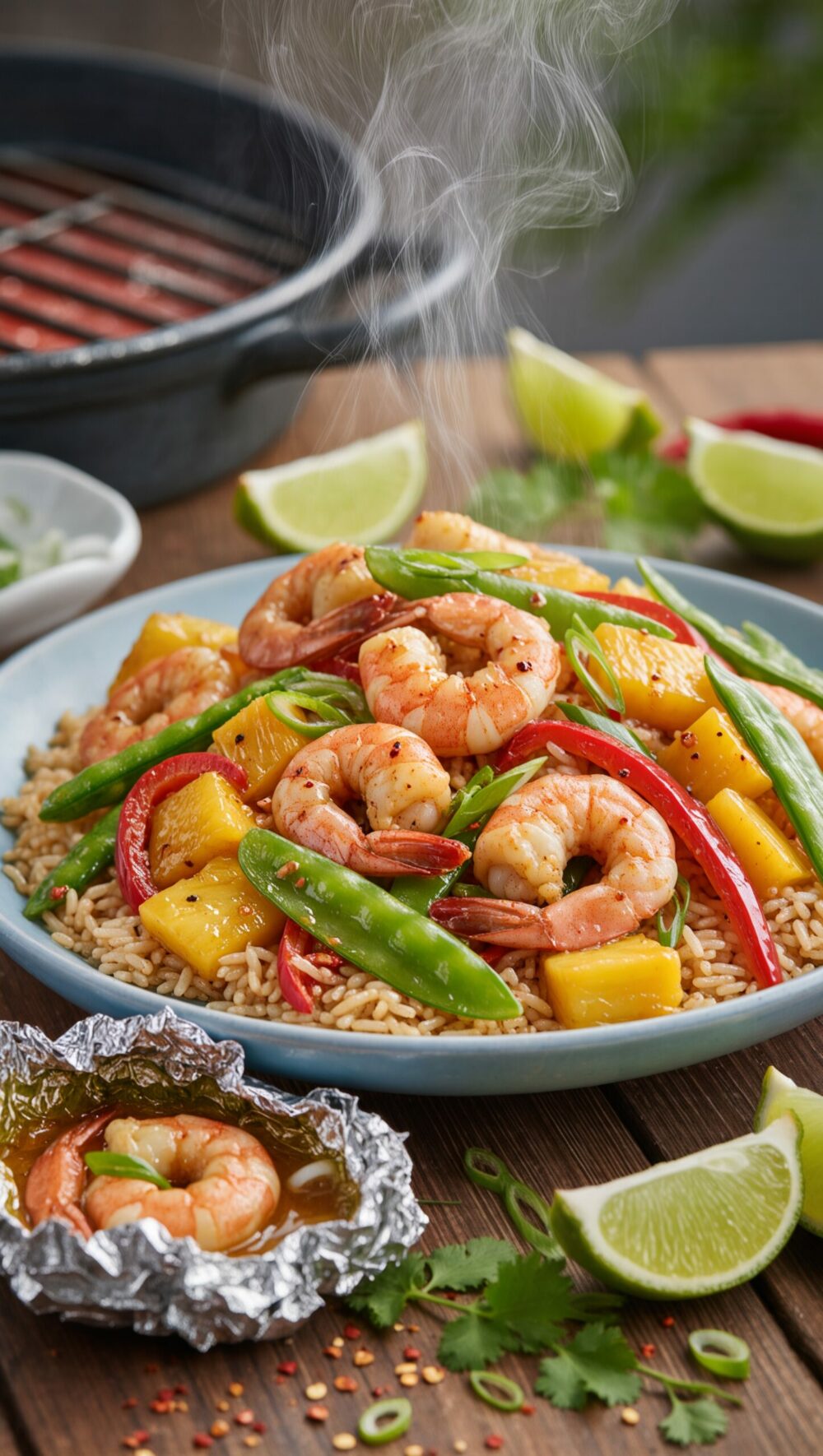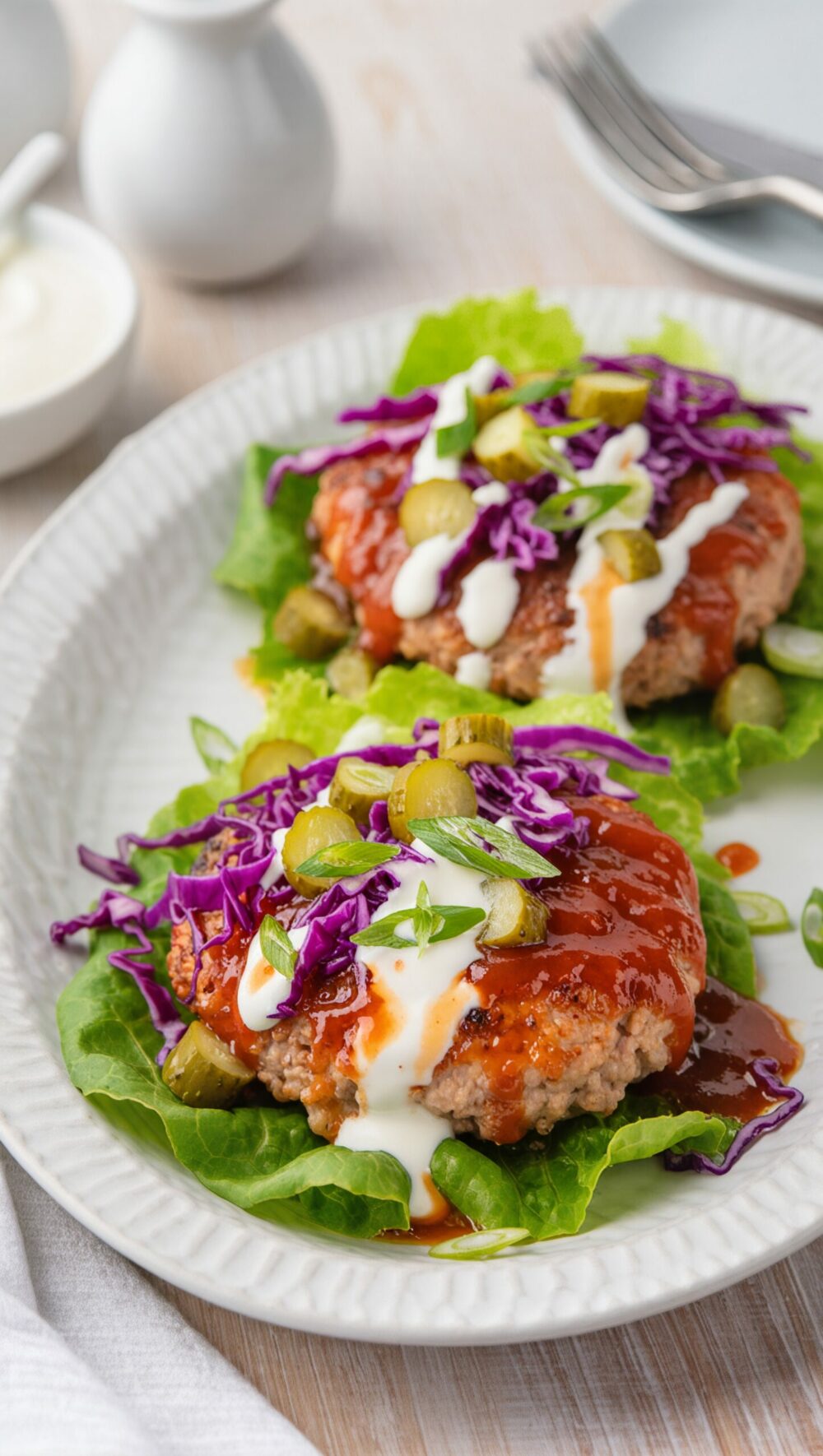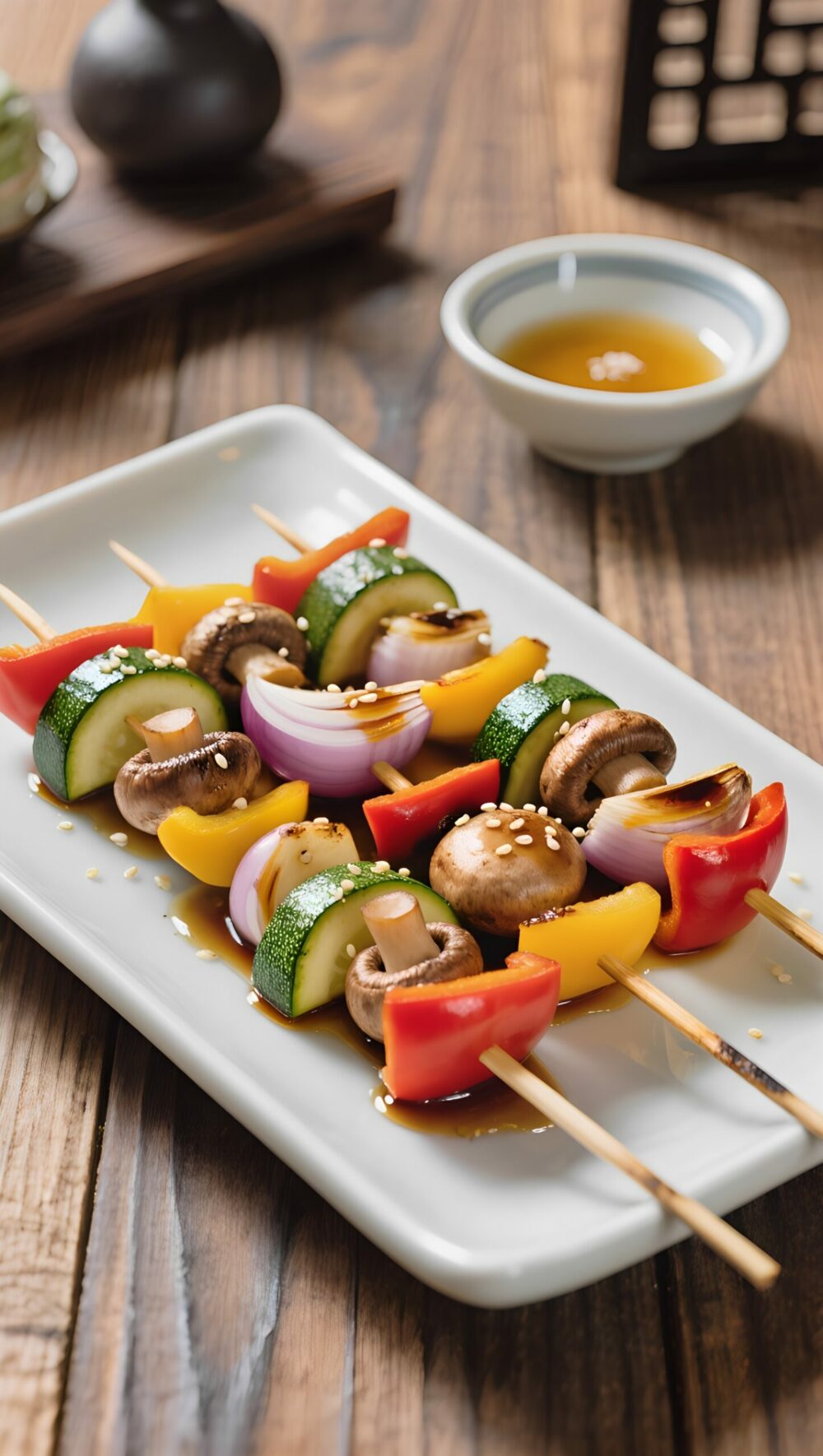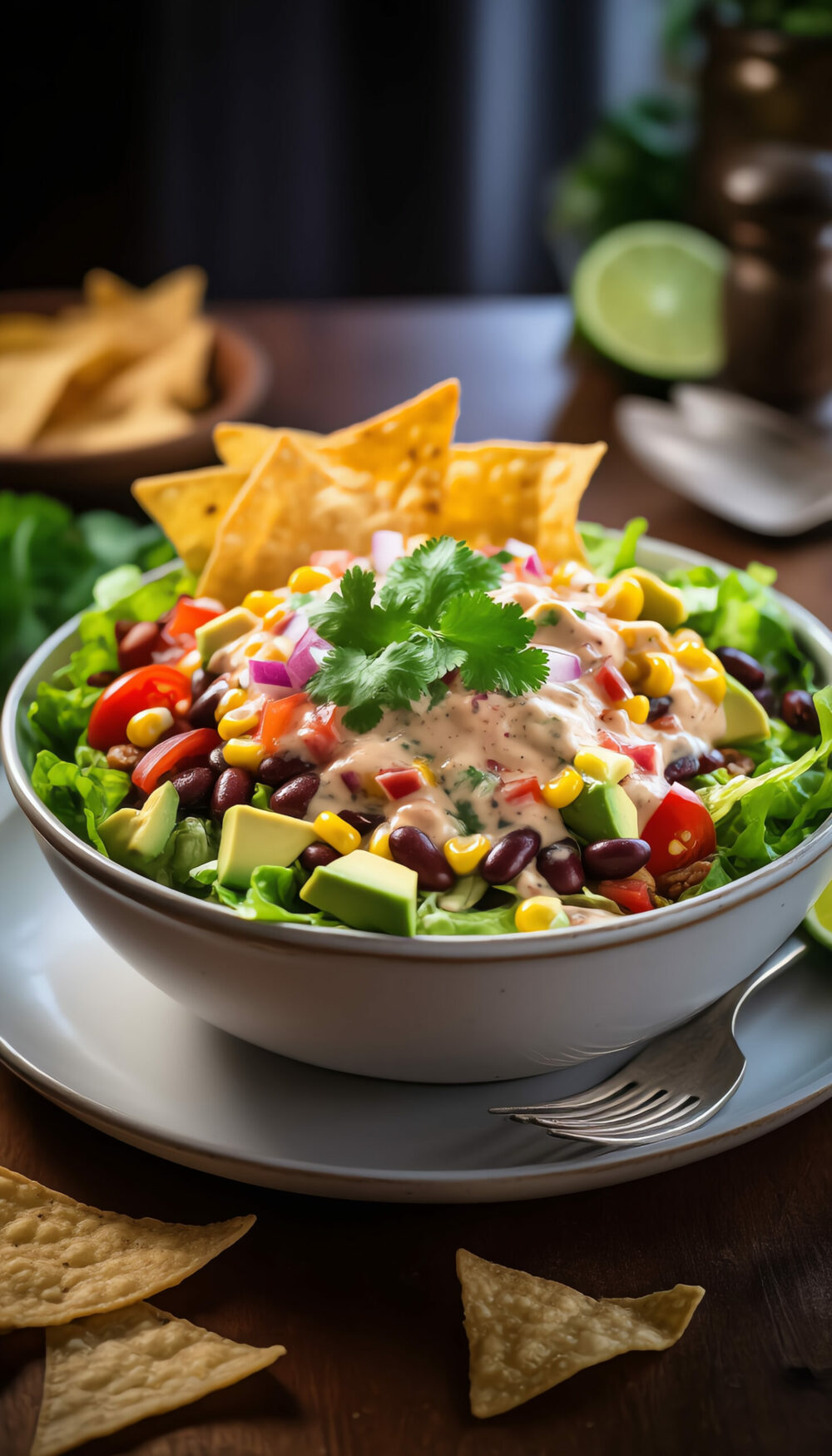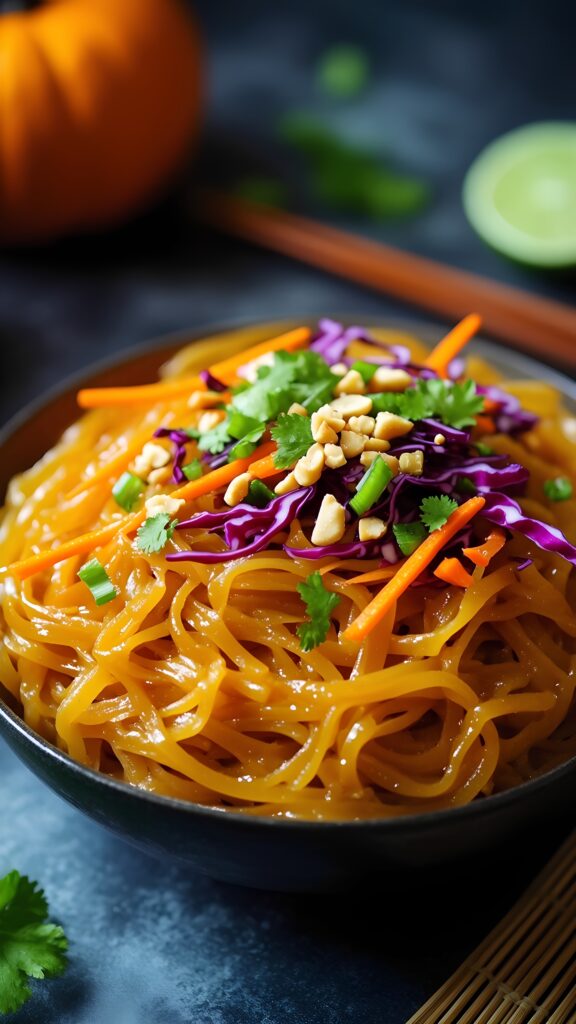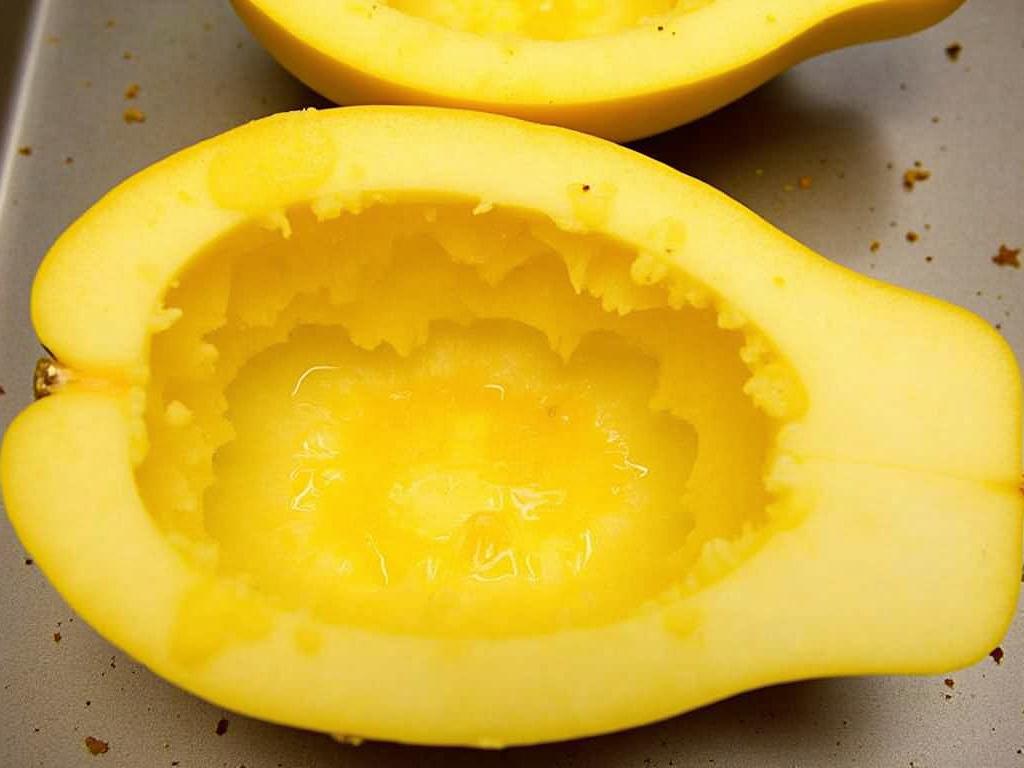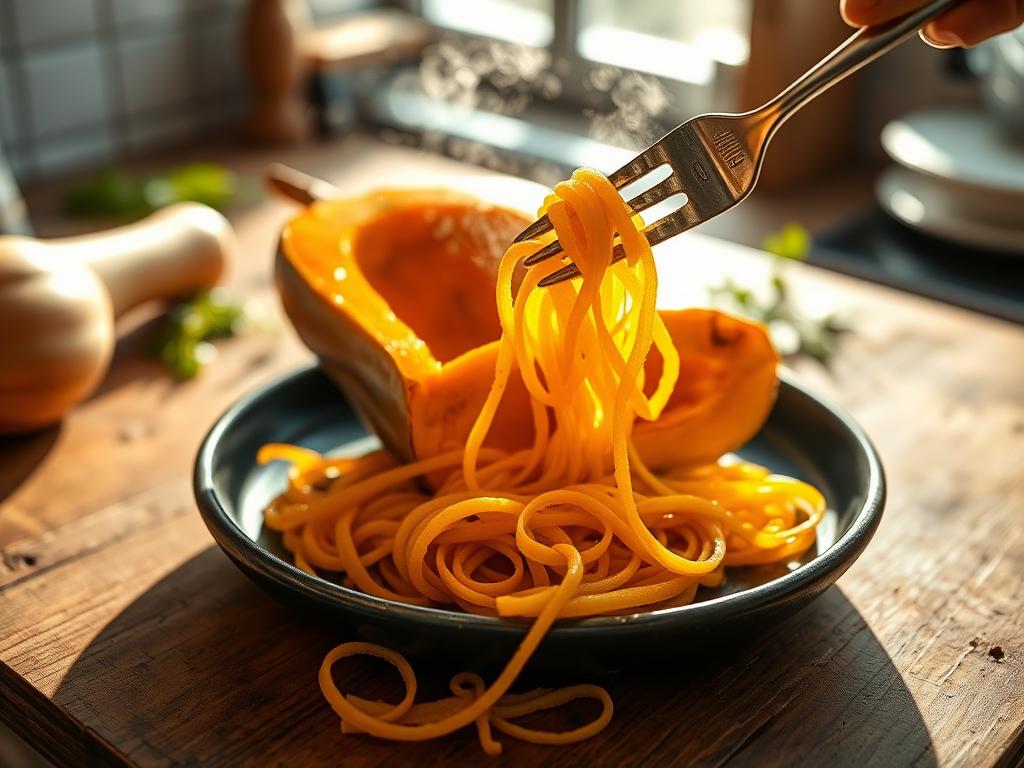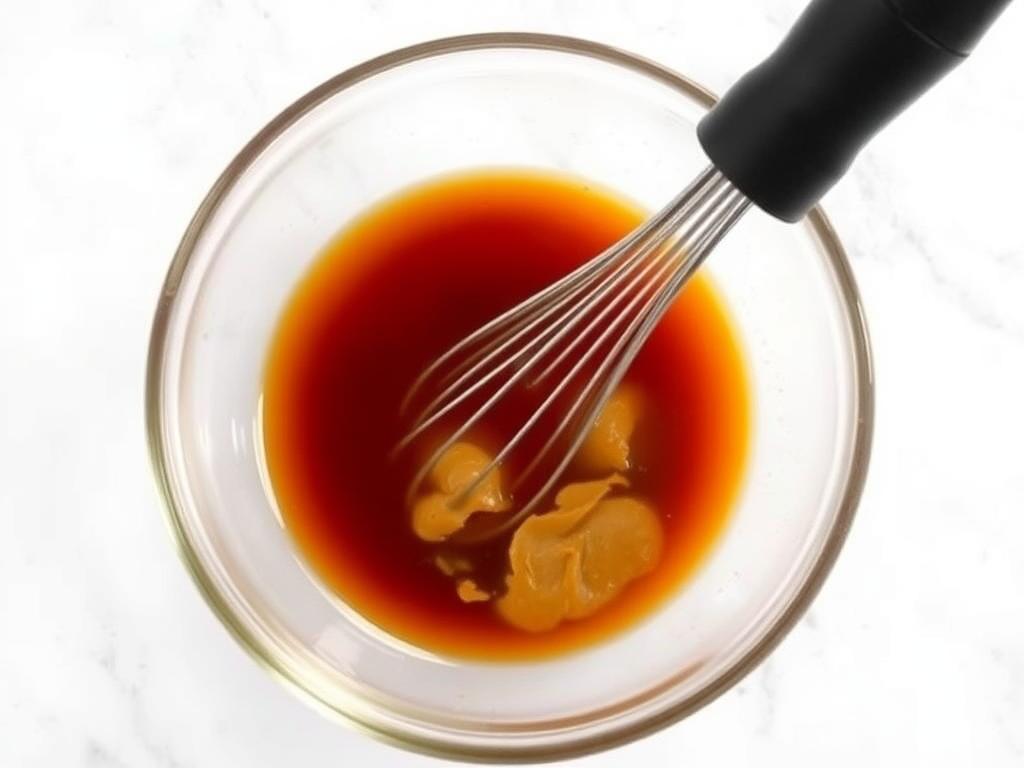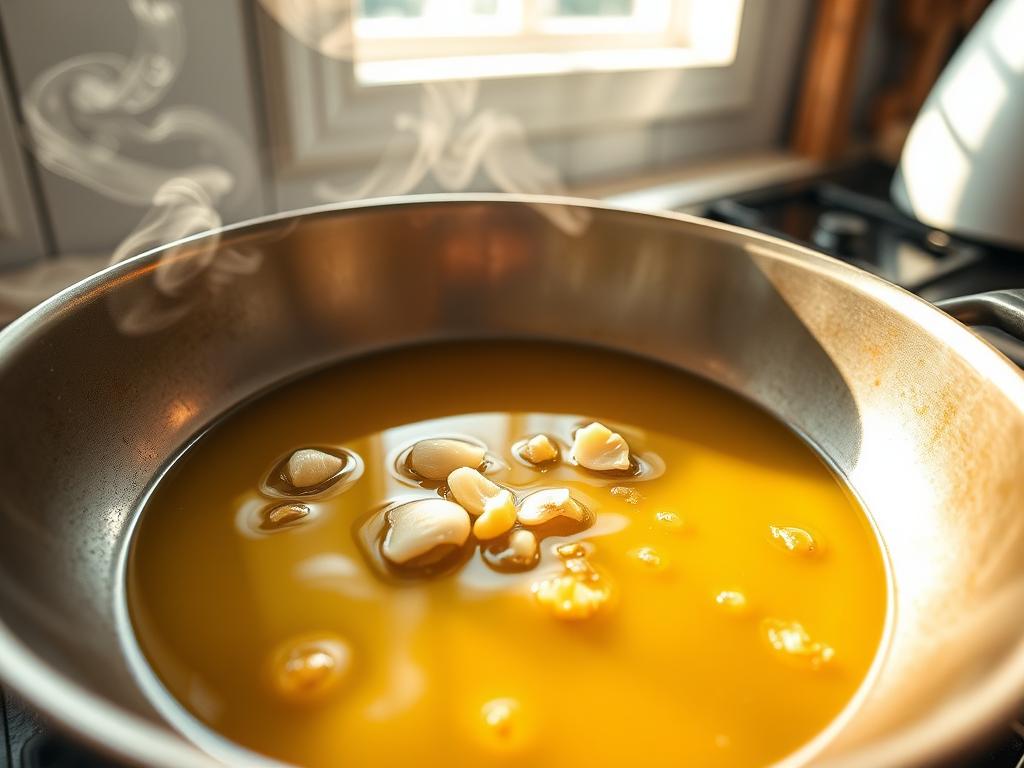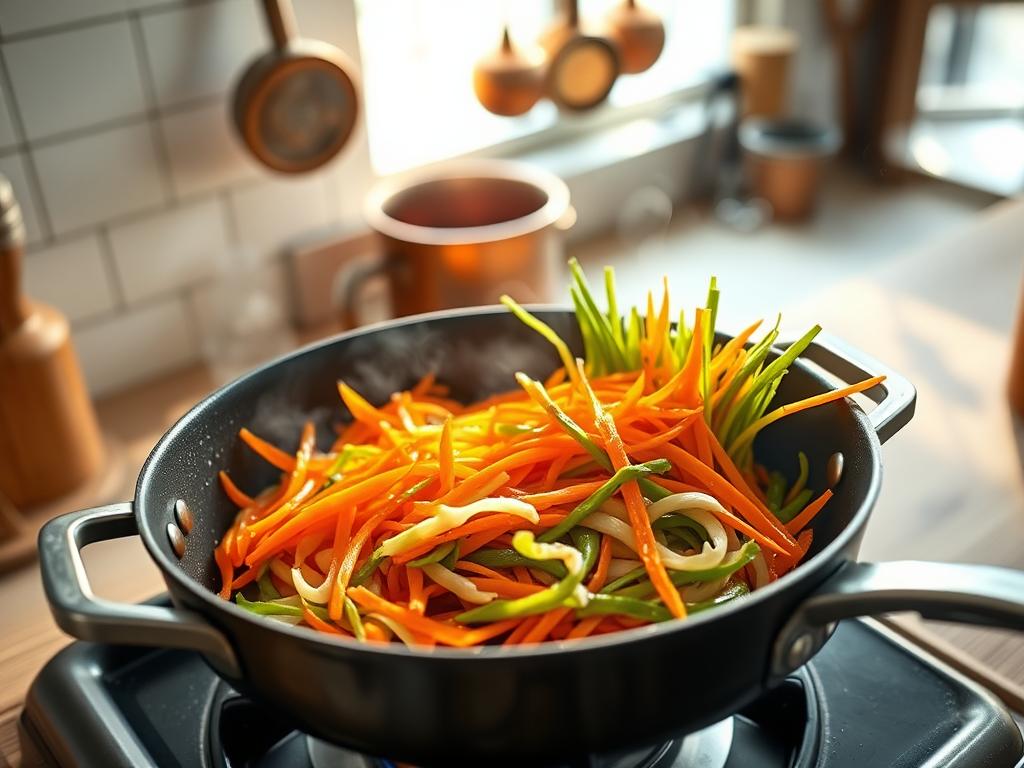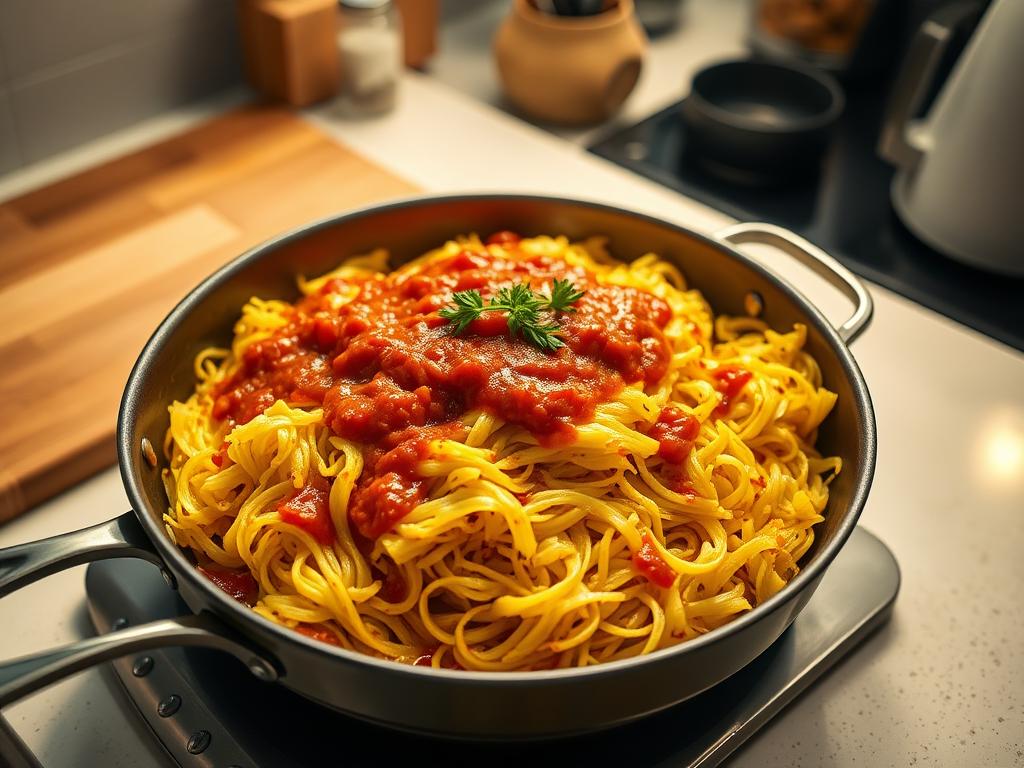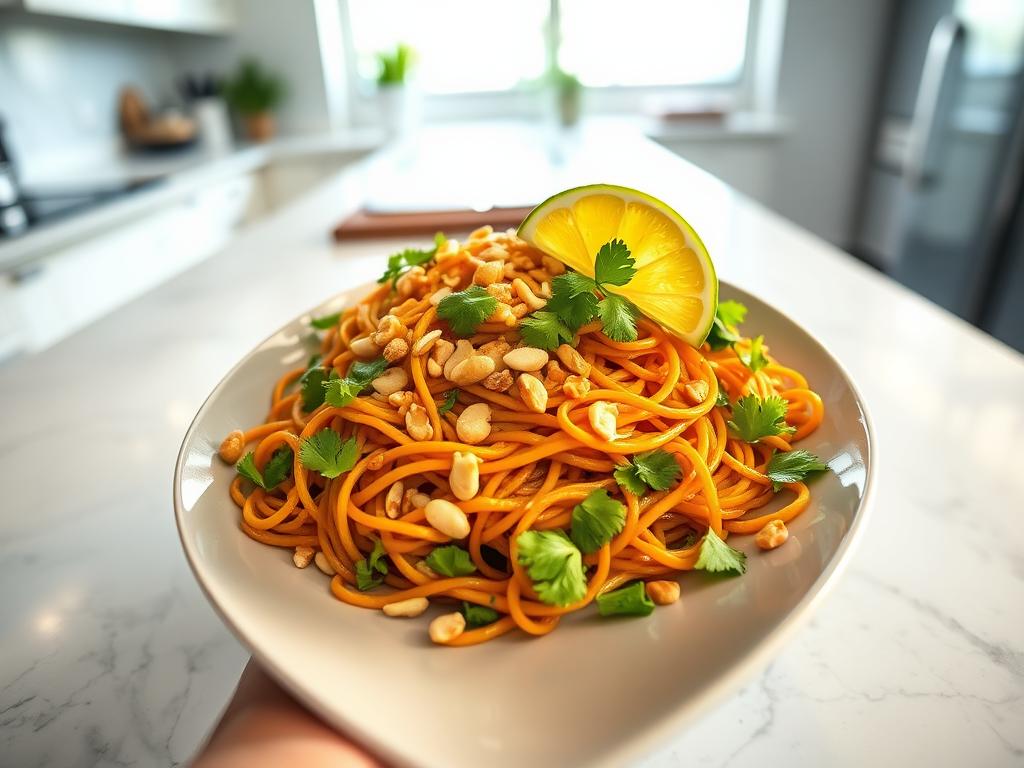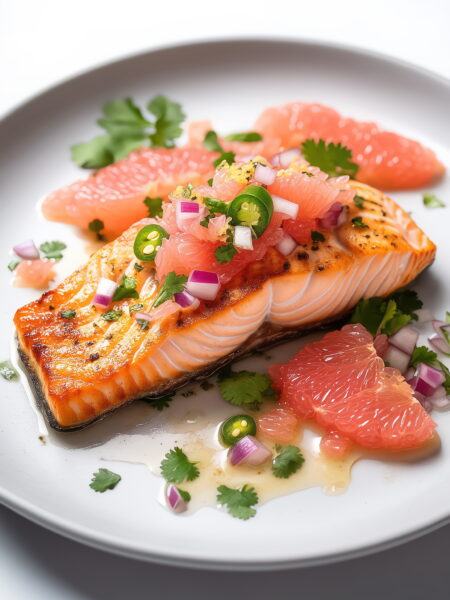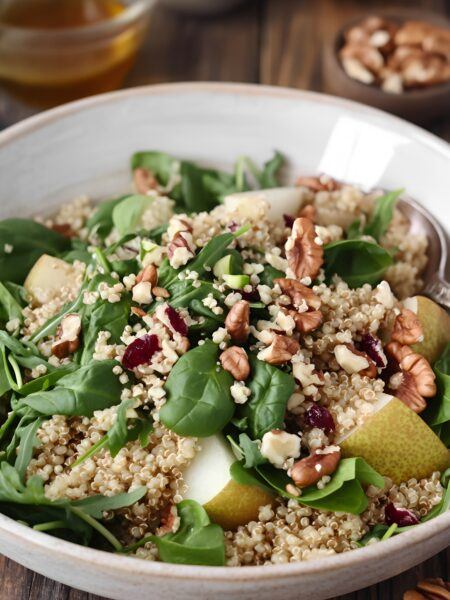Spaghetti Squash Pad Thai is a delightful twist on a classic dish, merging the vibrant flavors of traditional Thai cuisine with a low-carb, veggie-packed alternative. This recipe captures the essence of Pad Thai’s signature sweet, tangy, and savory notes while offering a fresh, healthy spin. Imagine the strands of spaghetti squash soaking up the luscious, aromatic sauce, creating a symphony of flavors in every bite.
Origin and Cultural Significance
Pad Thai, a beloved staple of Thai street food, has a rich history dating back to the mid-20th century. During World War II, rice was in short supply in Thailand, prompting the government to promote noodle-based dishes to conserve rice. Pad Thai quickly became a national favorite, celebrated for its vibrant flavors and versatility. This dish embodies the spirit of Thai cuisine, balancing sweet, sour, salty, and spicy elements with finesse. By substituting spaghetti squash for traditional rice noodles, we’ve crafted a recipe that pays homage to this iconic dish while embracing a modern, health-conscious twist.
Unique Ingredients and Cooking Techniques
The magic of Spaghetti Squash Pad Thai lies in its ingenious use of ingredients. The spaghetti squash, when roasted, transforms into tender, noodle-like strands that perfectly capture the dish’s flavors. Toasted peanuts add a delightful crunch, while a squeeze of fresh lime juice provides a zesty kick. The sauce, a harmonious blend of tamarind paste, fish sauce, and palm sugar, is the heart of Pad Thai, infusing the dish with its signature layers of taste. For an added punch, a sprinkle of chili flakes or a dash of sriracha can elevate the heat, catering to spice lovers. The cooking technique is straightforward, yet each step is crucial—roasting the squash to caramelize its natural sugars, sautéing garlic for aromatic depth, and tossing everything together to ensure every strand is coated in that irresistible sauce.
Healthy Gluten Free Spaghetti Squash Pad Thai
Ingredients
For the Spaghetti Squash
For the Sauce
For the Stir-Fry
Instructions
Preparing the Spaghetti Squash
-
Roast the Squash
Preheat your oven to 400°F (200°C). Slice the spaghetti squash in half lengthwise and scoop out the seeds. Drizzle the cut sides with olive oil, sprinkle with salt and pepper, and place them cut-side down on a baking sheet. Roast for 30-40 minutes or until the squash is tender when pierced with a fork.Roasting brings out the natural sweetness of the squash, making it the perfect base for our Pad Thai. -
Shred the Squash
Once roasted, let the squash cool for a few minutes. Then, using a fork, gently scrape the flesh into long, noodle-like strands. Set aside.Be careful, the squash will still be hot! Use a tea towel to hold it steady if needed.
Making the Pad Thai Sauce
-
Combine the Ingredients
In a small bowl, whisk together 3 tablespoons of soy sauce, 2 tablespoons of fish sauce, 2 tablespoons of lime juice, 2 tablespoons of brown sugar, and 1 tablespoon of peanut butter until smooth.This sauce is the heart of the dish, balancing salty, sweet, sour, and umami flavors.
Cooking the Pad Thai
-
Sauté Aromatics
Heat a tablespoon of oil in a large skillet over medium heat. Add 3 minced garlic cloves and a teaspoon of minced ginger. Sauté for about 30 seconds until fragrant.Don't let the garlic brown; it should be just golden to release its aroma. -
Cook the Vegetables
Add a cup of julienned carrots and a cup of bean sprouts to the skillet. Cook for 2-3 minutes, stirring frequently, until the veggies are tender-crisp.Feel free to add any other vegetables you love, like bell peppers or snap peas. -
Add Eggs and Protein
Push the veggies to one side of the skillet, crack 2 eggs into the empty side, and scramble them until just set. Add your choice of cooked protein, like chicken or shrimp.The eggs add richness to the dish, while the protein makes it a satisfying meal. -
Combine Everything
Add the shredded spaghetti squash and sauce to the skillet, tossing everything together until well combined and heated through.Ensure the squash absorbs the sauce completely for maximum flavor.
Finishing Touches
-
Garnish and Serve
Transfer the Pad Thai to a serving platter. Top with chopped peanuts, fresh cilantro, and lime wedges. Serve immediately.These garnishes add crunch, freshness, and a zesty kick to each bite.
Note
For a deeper flavor, toast the peanuts lightly in a dry skillet before using them as a garnish. When dealing with the spaghetti squash, be sure to fork the strands gently to maintain their shape and texture. If you prefer a bit more heat, add a pinch of red pepper flakes or a splash of sriracha to the sauce. To achieve a more authentic Pad Thai taste, use tamarind paste in the sauce—it adds a distinct tangy note. Substitute tofu with shrimp or chicken for added protein, adjusting cooking times accordingly. Fresh lime juice is essential for brightening the dish; don’t skip it! For a nut-free version, replace peanuts with sunflower seeds or omit them entirely. If the sauce is too thick, thin it with a splash of water or vegetable broth. Consider swapping the bean sprouts with julienned carrots or zucchini for an extra veggie boost. Always taste and adjust the seasoning toward the end; the balance of sweet, salty, sour, and spicy should be just right. Serve immediately for the best texture, as the squash can become soggy upon sitting. Store leftovers in an airtight container in the fridge for up to two days, reheating gently over low heat to prevent the squash from overcooking.

